Disclosure: This article contains affiliate links. We may earn a commission from purchases at no extra cost to you, which helps our travel content.
There's something magical about port cities—these gateways between land and sea have always been crucibles of culture, commerce, and cuisine. After 15 years of calling Rio de Janeiro home (another spectacular port city), I've developed a fascination with these maritime crossroads. Last spring, I embarked on what might seem like an unusual pairing: two weeks split between Massawa, Eritrea and Osaka, Japan. Two port cities with histories as divergent as their culinary traditions, yet both offering extraordinary windows into how maritime heritage shapes urban identity.
Massawa: The Sleeping Beauty of the Red Sea
Massawa feels like a city caught between centuries. Walking through the narrow streets of the old town, Ottoman and Egyptian architectural influences create an atmosphere that's both haunting and mesmerizing. Buildings with ornate wooden balconies stand alongside Italian colonial structures, many still bearing the scars of Eritrea's long struggle for independence.
Unlike the carefully preserved historic districts you might find in Europe, Massawa's old quarter feels authentically worn. Families live in centuries-old buildings, laundry fluttering from windows that once might have framed the faces of Ottoman merchants.
One morning, I joined a local fisherman named Haile who offered to show me how they make traditional injera bread using a portable clay stove. We sat in the shadow of a crumbling Portuguese-era building as he expertly poured the fermented batter onto the hot surface. 'My family has fished these waters for seven generations,' he told me, 'but we've always been bakers too.'
That evening, I ventured into the local market armed with my pocket translator which proved invaluable for deciphering the names of unfamiliar spices. The device quickly became a conversation starter, with curious vendors asking to try it themselves.

💡 Pro Tips
- Visit Massawa's old town early morning before the heat becomes unbearable
- Bring cash as ATMs are scarce and often unreliable
- Respect local customs by dressing modestly even in the heat
Culinary Connections in the Horn of Africa
If you're like me and believe food is the most direct route to understanding a culture, Massawa won't disappoint. The city's cuisine reflects its position at the crossroads of African, Middle Eastern, and Mediterranean influences.
I'd arranged to meet with a local family who agreed to teach me how to prepare zigni, a rich Eritrean stew. Stepping into their modest kitchen with my spice grinder as a gift (always bring something useful when invited into homes), I was immediately enveloped in the warm aroma of berbere spice being toasted.
Mama Senait, the family matriarch, laughed at my clumsy attempts to tear pieces of injera with one hand as is customary. 'You eat like a Canadian,' she teased, 'but you'll leave cooking like an Eritrean.'
What struck me was how similar the communal eating style was to Brazilian feijoada gatherings—food as the centerpiece of family connection. By the end of our cooking session, I'd not only learned to make a respectable zigni, but I'd also been invited to a wedding the following day (which turned out to be one of the most memorable experiences of my trip).
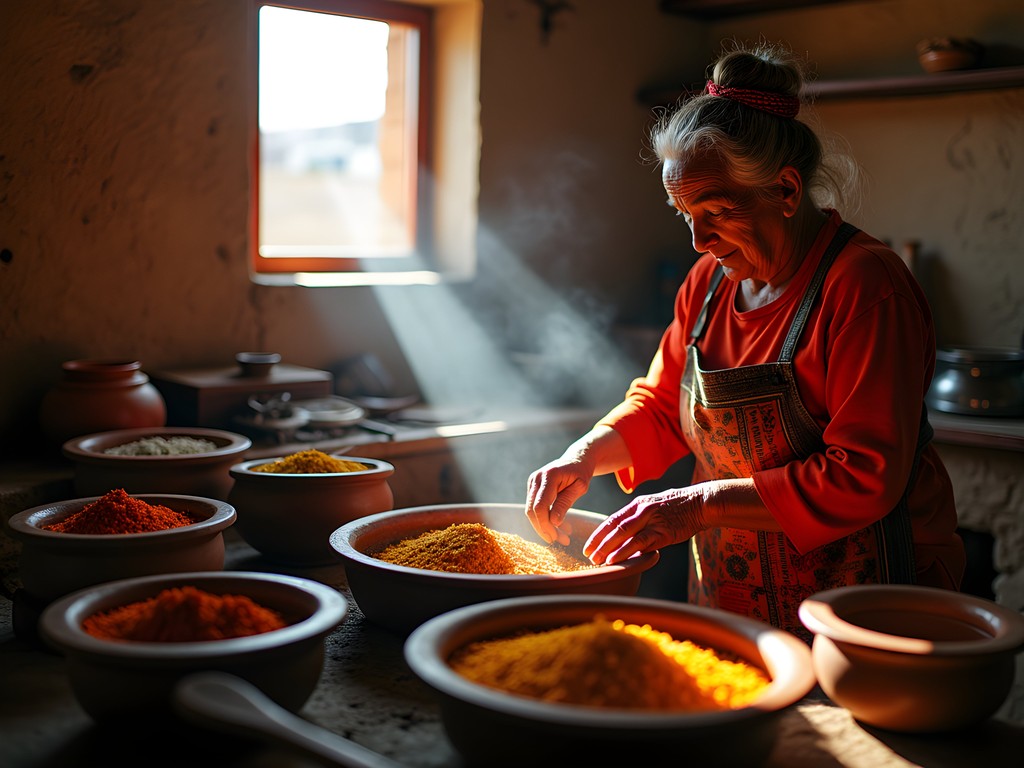
💡 Pro Tips
- Always accept food offerings as refusal can be considered rude
- Learn a few basic Tigrinya phrases - locals appreciate the effort
- If invited into a home, bringing coffee beans is always appreciated
Osaka: Neon Lights and Ancient Rites
Arriving in Osaka after Massawa creates the sort of culture shock that makes travel so addictive. The sensory contrast couldn't be more dramatic—from Massawa's quiet, sun-baked streets to Osaka's neon-drenched, 24-hour urban energy.
While Massawa whispers its history, Osaka broadcasts its present at maximum volume. Yet both are fundamentally shaped by their relationship with the sea. Osaka Bay's massive port facilities have been the city's economic engine for centuries, though most visitors never venture to see them.
I spent my first evening in Dotonbori, where the famous Glico Running Man sign has been welcoming visitors since 1935. Armed with my travel umbrella (spring showers are common), I joined the crowds sampling street food beneath the kaleidoscopic advertisements.
Unlike Massawa's preservation-by-neglect approach, Osaka deliberately maintains pockets of its past while enthusiastically embracing the future. In Shinsekai district, I found myself eating kushikatsu (fried skewers) in a shop unchanged since the 1950s, while just outside, robot-themed cafés and virtual reality arcades competed for attention.
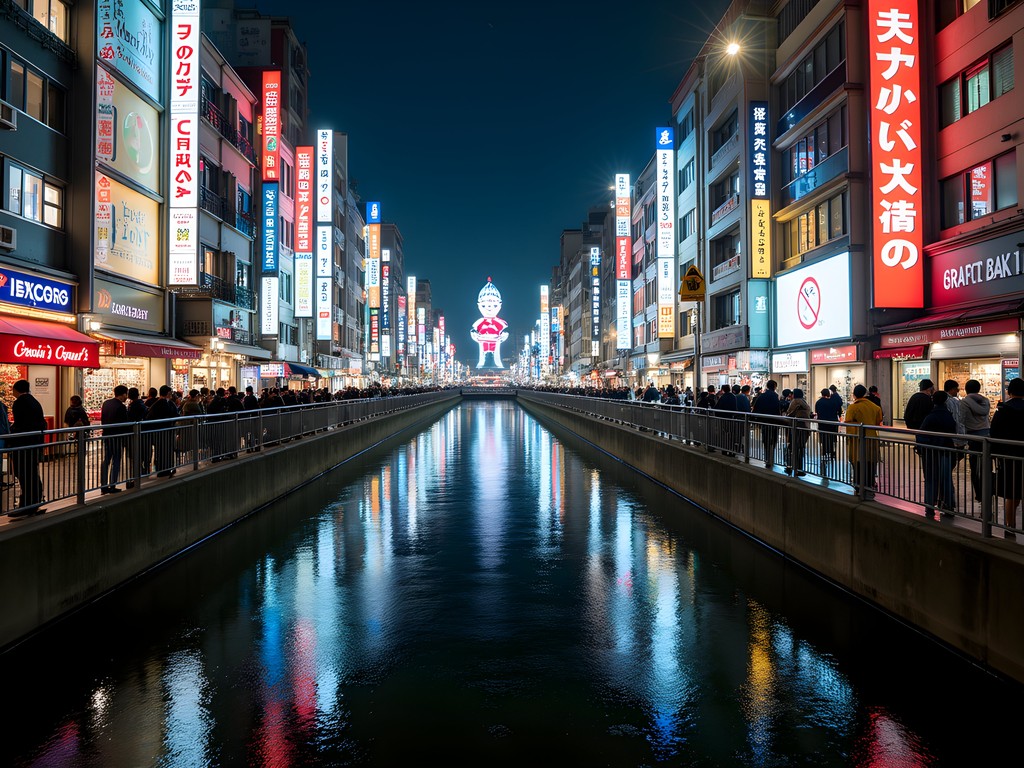
💡 Pro Tips
- Purchase an ICOCA card immediately for convenient public transportation
- Don't miss Kuromon Market for the freshest seafood
- Osaka is more casual than Tokyo - people are direct and food-focused
Maritime Heritage in Modern Japan
While Osaka dazzles with modernity, its maritime soul remains if you know where to look. I spent a fascinating morning at the Osaka Maritime Museum, housed in a striking dome structure in the bay. The exhibits tracing Japan's evolution as a sea power provided context that made the rest of my explorations more meaningful.
Later, I joined a small boat tour of the working port—something few tourists do—which offered incredible perspectives on the scale of international shipping. Our guide pointed out how the artificial islands of Osaka Bay have transformed the coastline over centuries.
One evening, I attended a cooking class focused on Osaka's traditional kappo cuisine. The chef demonstrated how proximity to fresh seafood has shaped local cooking techniques. I was grateful I'd packed my chef's knife (always in checked luggage!) as we practiced knife skills essential to Japanese cuisine.
'In Osaka,' the chef explained while showing us how to properly fillet a mackerel, 'we say kuidaore—eat until you drop. Food is not just sustenance but our cultural identity.' I couldn't help but think how similar this sentiment was to Brazilian attitudes toward food, despite the vast differences in preparation and presentation.
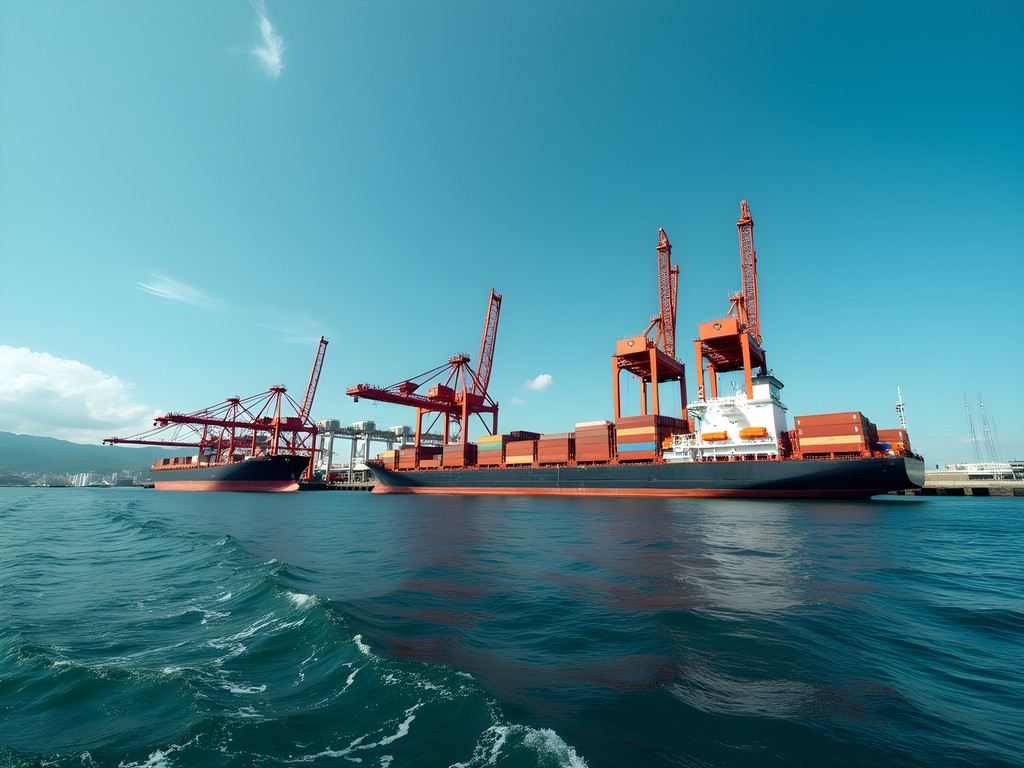
💡 Pro Tips
- Book the port tour in advance as spaces fill quickly
- Try takoyaki from several vendors to find your favorite style
- Visit Osaka Castle early morning to avoid crowds
Bridging Worlds Through Urban Exploration
The true joy of comparing these two port cities came in discovering unexpected parallels. Both Massawa and Osaka have been shaped by foreign influences while maintaining distinct identities. Both have faced destruction—Massawa through war, Osaka through WWII bombing—and rebuilt with different philosophies.
In both cities, I found myself relying on my water filter bottle which proved essential in Massawa's limited infrastructure and convenient during long days exploring Osaka's endless streets.
One evening in Osaka, I found myself in a tiny bar where the owner had traveled extensively in Africa. When I mentioned my recent time in Massawa, he pulled out a photo album showing his visit there decades earlier. We spent hours comparing notes on how both places had changed, the conversation flowing easily despite language barriers.
This kind of serendipitous connection is what urban exploration is truly about—finding the human threads that connect seemingly disparate places. Whether it's fishermen in Massawa or sushi chefs in Osaka, those who make their living from the sea share a certain understanding that transcends culture.
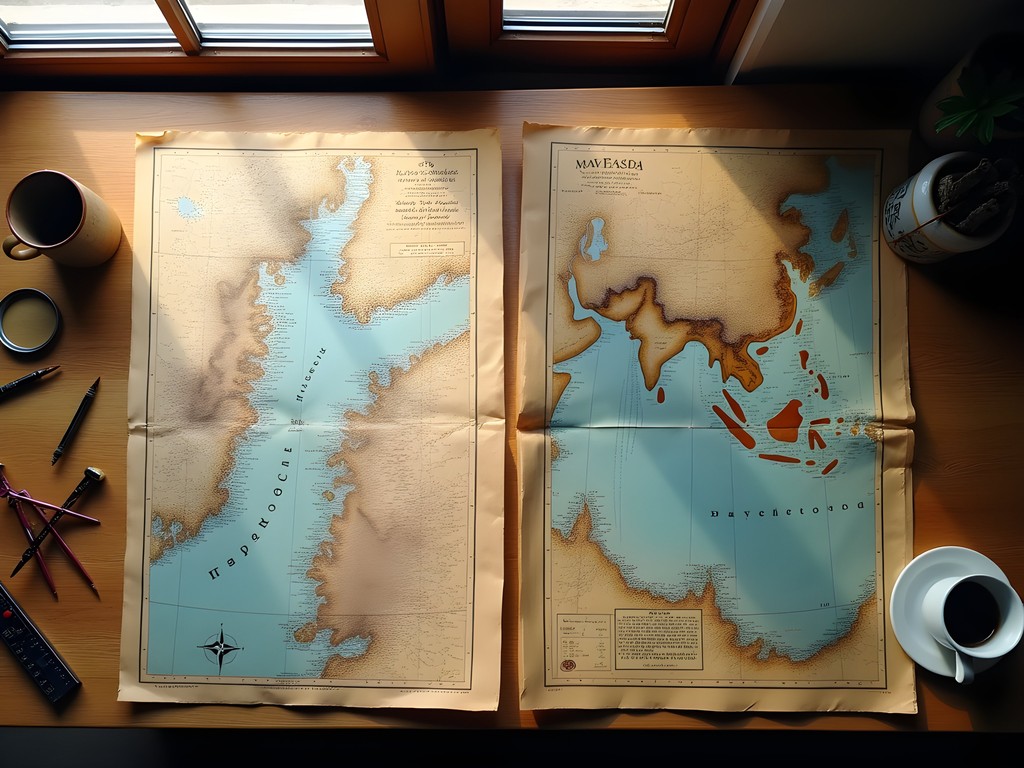
💡 Pro Tips
- Schedule downtime between intense urban exploration days
- Journal your observations while they're fresh
- Seek out local maritime workers for authentic perspectives
Final Thoughts
As my two-week journey between these contrasting port cities came to an end, I found myself sitting in Kansai International Airport (itself built on an artificial island in Osaka Bay) reflecting on what makes urban exploration so addictive. It's not just about photographing pretty streets or sampling exotic foods—it's about understanding how cities evolve as living organisms, shaped by their geography, history, and the sea that connects them to the wider world.
Massawa and Osaka could hardly be more different on the surface—one a quiet, crumbling testament to colonial ambitions, the other a hyperactive showcase of technological innovation. Yet both reveal how maritime heritage creates a distinct urban character that persists through centuries of change.
Whether you're drawn to the weathered charm of Massawa or the sensory overload of Osaka, I encourage you to look beyond the obvious attractions. Speak with fishmongers and dock workers. Ask about how the sea has shaped local life. And most importantly, come hungry—not just for food, but for the stories that reveal a city's true character.
✨ Key Takeaways
- Port cities offer unique perspectives on how maritime trade shapes urban culture
- Contrasting different cities can reveal unexpected similarities in human experience
- The most authentic experiences often come through culinary exploration with locals
📋 Practical Information
Best Time to Visit
March-May for Massawa (before summer heat); March-April for Osaka (cherry blossom season)
Budget Estimate
$2,500-3,500 USD for two weeks excluding flights
Recommended Duration
3-4 days in Massawa, 7-10 days in Osaka
Difficulty Level
Moderate (Due To Language Barriers And Massawa's Limited Infrastructure)













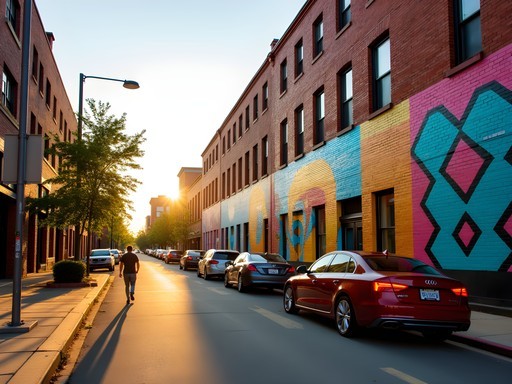
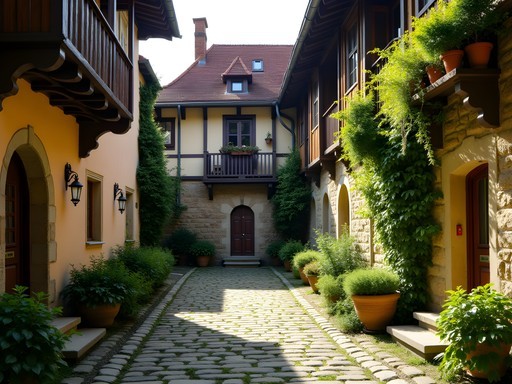
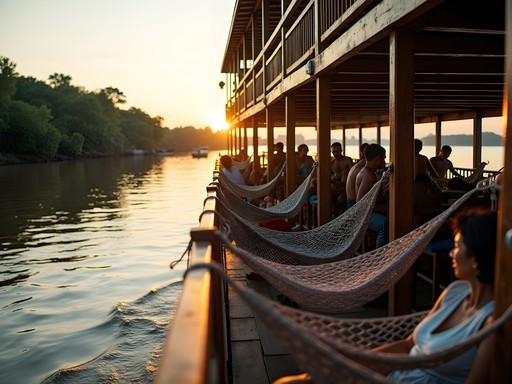
Comments
smartguide
How difficult was it to get a visa for Eritrea? I've heard it can be complicated.
Tyler Gutierrez
It's definitely not straightforward. I had to apply through the Eritrean embassy in Rome and provide a detailed itinerary. The process took about 6 weeks, and I needed an official letter of invitation from a local tour operator. Worth the effort though!
winteradventurer
What a fascinating comparison! I've been to Osaka twice but never even considered Eritrea. The way you described Massawa as the 'Sleeping Beauty of the Red Sea' has me intrigued. Those colonial architecture photos are stunning!
Tyler Gutierrez
Thanks! Massawa really is a hidden gem. The Ottoman and Italian influences create this incredible architectural mix that feels frozen in time.
vacationstar
This is so cool! I've been to Osaka but never even heard of Massawa before. Is it safe to visit Eritrea? And what was your favorite food spot in Osaka? I'm heading back there in January!
TylerG_travels
Eritrea requires some preparation - you need permits for travel outside Asmara, and the political situation can be complex. I felt safe in Massawa but always traveled with local guides. For Osaka food, don't miss Kuromon Market for the freshest seafood and definitely try Mizuno for okonomiyaki - get there early to avoid the lines! I kept track of everything in my travel journal which was super helpful.
vacationstar
Thanks for the tips! Adding Kuromon Market to my list. Maybe I'll save Eritrea for when I'm a more experienced traveler 😅
Sage Dixon
vacationstar - if you do hit Osaka, also try the takoyaki stands around Dotonbori. The ones with the longest local lines are usually best! And Tyler's right about Eritrea - amazing but definitely not a beginner destination.
Sage Dixon
Tyler, this comparison between Massawa and Osaka is brilliant! I visited Massawa back in 2023 and was equally struck by those Ottoman and Italian architectural influences - it's like walking through living history. The contrast with Osaka's hypermodernity is such a fascinating lens. Did you find the port area in Massawa still operational or mostly historical now? When I was there, it seemed like just a fraction of its former glory but still had this haunting beauty. Your description of the culinary connections really resonated - that Eritrean seafood stew you mentioned is still one of my most memorable meals abroad!
TylerG_travels
Thanks Sage! The port is still operational but definitely at reduced capacity. Mostly smaller fishing vessels and some regional trade. And yes, that seafood stew - I still dream about it! Did you make it to the old pearl diving district?
Sage Dixon
I did! Though the local guide I had wasn't as knowledgeable about that area. Wish I'd had more time to explore it properly. Your post makes me want to go back!
Venture X
Premium card with 2X miles, $300 travel credit, Priority Pass